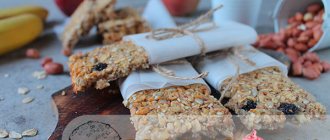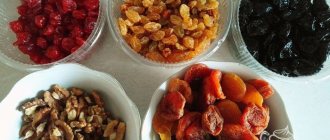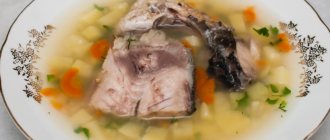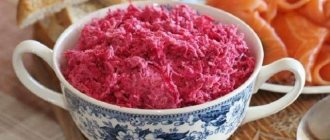Production technology at the plant
The production of canned corn is a sequential process that includes:
- Acceptance of the product. At this stage, corn is delivered from the fields to factories, where it is sorted into varieties, and grains that are not suitable for canning are disposed of.
- Cleaning. Leaves and threads are removed from the cobs, after which the grains are trimmed and sent for washing. There the grain is washed, cleansed from small impurities and shells.
- Inspection. After washing, the grain falls onto a conveyor belt, where damaged grains are manually or automatically selected.
- Blanching and cooling. Blanch the grains at a temperature of 90 °C for 5 minutes for premium corn and 7 minutes for first grade corn. At the end of this stage, the grains are cooled with cold water.
- Preparing the fill. Corn filling is prepared according to a unique recipe.
- Packaging and capping. Corn and bay are sent to cans for preservation, after which they are sealed using sealing machines.
- Sterilization.
- Control. After sterilization, mandatory quality control is carried out at a frequency of one jar per hour.
Types of Canned Corn
Depending on the form in which the product was canned, canned sweet corn is distinguished:
- on the cob;
- from whole grains;
- crushed.
In addition, canned corn is divided into varieties:
- highest (no more than 20% of mechanically damaged grains are allowed);
- first (no more than 40% damaged grains are allowed).
How to choose?
You can choose tasty and high-quality canned corn by studying the following characteristics:
- Exterior of the can. The tin can must be intact, without dents or deformation. When damaged, copper and tin begin to be released from it, which can pass into the corn.
- The glass jar must be clean, without stains or traces of leakage or rotten product.
- Label. It must be clean and evenly pasted (this indicates that the production, transportation and storage of the can was carried out in accordance with the standards).
- Production information. High-quality corn must comply with GOST. According to the rules, the composition should include only corn, sugar, salt and water.
- Best before date.
After opening the jar, the quality of the corn can be judged by the grains: they must have the correct, uniform shape, have a natural color and a pleasant, sweetish aroma. If the grains are irregular in shape, have dark spots and are not packed tightly, the quality of the canned corn is considered low.
In stores, corn is sold not only in tins, but also in glass jars, so the question arises: “Which one is better to buy?” You should opt for corn in a tin. The fact is that processing grains in tin packaging requires less time, and the can itself heats up and cools faster, which allows you to optimize the production process, improve taste and retain more nutrients in the product.
How to choose the right canned corn
Large chain stores usually offer a wide range of canned corn from different manufacturers. At the same time, you can find trademarks not only from Russia, but also from Hungary, Poland, China, Thailand, Moldova and Belarus.
It is interesting that the world-famous French company Bonduelle currently not only supplies the Russian market with its own canned vegetables grown in the south of Russia (Kuban, Krasnodar Territory), but also often fulfills orders to produce products for other brands (Globus, “ We eat at home”, etc.).
Therefore, when choosing canned food, you should focus not only on well-known brands or price levels, but also on a number of objective criteria that are the same for all canned corn grains.
- Firstly, you need to pay attention to the expiration date (the date must be applied with indelible paint on the iron parts of the tank) and the absence of deformation of the jar. In this case, it is worth choosing canned food produced in the fall or summer, when the corn ripens. Grain made from pre-dried raw materials ends up in jars that are screwed at other times (this applies to European and Russian producers).
- Secondly, you should trust products that are marked with GOST. After all, the requirements of the standard recommend the presence in canned food only of grains, water, salt and sugar in certain proportions and of appropriate quality.
- Thirdly, you must carefully read the composition indicated on the packaging. Carbohydrates should not exceed 11-12 g per 100 g. If this threshold is exceeded, the dish contains too much sugar, which affects the benefits of consumption.
- Fourthly, you can shake the jar slightly to make sure that the amount of grains in relation to the liquid is normal. Sometimes manufacturers add more water than required by the standard and there is a risk of buying liquid at the price of grains. If the jar gurgles too much when you shake it, it's best to leave it on the shelf.
How to store?
Storing canned food seems simple. © https://ydoo.info/product/konservirovannaya-kukuruza.html However, you should remember the terms and conditions for storing products.
Conditions
You can store canned corn either in the refrigerator or at room temperature. For a closed tin can, temperatures up to +25 °C are suitable. A glass jar should be stored exclusively in the refrigerator, but for a tin jar, both a refrigerator and a kitchen cabinet are suitable.
Term
Under proper conditions, the shelf life of corn in a tin can is 3 years, and in a glass jar - no more than 2 years.
If the can was opened
If the can has been opened, it is best to use the corn right away. If there is a need to preserve leftovers, the open jar can be placed in the refrigerator, but the shelf life of corn there is only a day.
Can it be frozen?
Unused corn can be frozen. Before putting it in the freezer, you need to drain the remaining liquid and dry the grains thoroughly with a paper towel. After this, transfer the corn kernels to a plastic bag or plastic container and place in the freezer. The shelf life of the product under such conditions is about 6 months.
Frozen corn contains fewer nutrients than it originally had, although the taste does not disappear.
What kind of corn is harvested?
For preservation, the most ripe and juicy corn is selected. Firstly, it must belong to the sugar type, which has the largest amount of vitamins and minerals. And secondly, it must have a milky-waxy state. You can check this this way: if, when pressing on a grain of corn, splashes of milk appear and pulp comes out of the grain, then this is corn of the required ripeness, ready for preservation.
You should pay attention to the condition of the grains on the head of cabbage: they should be the same size, shape and color, without dark spots or mechanical damage.
You can judge the ripeness of corn by its leaves. If they are dry, it means the heads of cabbage have been stored for too long, but leaves that release juice when pressed indicate the ripeness of the corn.
Canned corn calories. Chemical composition and nutritional value.
Nutritional value and chemical composition of “canned corn”.
The table shows the nutritional content (calories, proteins, fats, carbohydrates, vitamins and minerals) per 100 grams of edible portion.
| Nutrient | Quantity | Norm** | % of the norm in 100 g | % of the norm in 100 kcal | 100% normal |
| Calorie content | 54 kcal | 1684 kcal | 3.2% | 5.9% | 3119 g |
| Squirrels | 2.2 g | 76 g | 2.9% | 5.4% | 3455 g |
| Carbohydrates | 11.2 g | 219 g | 5.1% | 9.4% | 1955 |
| Alimentary fiber | 1.7 g | 20 g | 8.5% | 15.7% | 1176 g |
| Water | 82.61 g | 2273 g | 3.6% | 6.7% | 2751 g |
| Ash | 0.8 g | ~ | |||
| Vitamins | |||||
| Vitamin A, RE | 2 mcg | 900 mcg | 0.2% | 0.4% | 45000 g |
| alpha carotene | 10 mcg | ~ | |||
| beta carotene | 0.009 mg | 5 mg | 0.2% | 0.4% | 55556 g |
| beta Cryptoxanthin | 14 mcg | ~ | |||
| Lutein + Zeaxanthin | 650 mcg | ~ | |||
| Vitamin B1, thiamine | 0.015 mg | 1.5 mg | 1% | 1.9% | 10000 g |
| Vitamin B2, riboflavin | 0.015 mg | 1.8 mg | 0.8% | 1.5% | 12000 g |
| Vitamin B4, choline | 16.6 mg | 500 mg | 3.3% | 6.1% | 3012 g |
| Vitamin B5, pantothenic | 0.522 mg | 5 mg | 10.4% | 19.3% | 958 g |
| Vitamin B6, pyridoxine | 0.037 mg | 2 mg | 1.9% | 3.5% | 5405 g |
| Vitamin B9, folates | 38 mcg | 400 mcg | 9.5% | 17.6% | 1053 g |
| Vitamin C, ascorbic acid | 2.6 mg | 90 mg | 2.9% | 5.4% | 3462 g |
| Vitamin E, alpha tocopherol, TE | 0.03 mg | 15 mg | 0.2% | 0.4% | 50000 g |
| Vitamin RR, NE | 0.884 mg | 20 mg | 4.4% | 8.1% | 2262 g |
| Macronutrients | |||||
| Potassium, K | 136 mg | 2500 mg | 5.4% | 10% | 1838 |
| Calcium, Ca | 4 mg | 1000 mg | 0.4% | 0.7% | 25000 g |
| Magnesium, Mg | 15 mg | 400 mg | 3.8% | 7% | 2667 g |
| Sodium, Na | 195 mg | 1300 mg | 15% | 27.8% | 667 g |
| Sera, S | 19.5 mg | 1000 mg | 2% | 3.7% | 5128 g |
| Phosphorus, Ph | 46 mg | 800 mg | 5.8% | 10.7% | 1739 |
| Microelements | |||||
| Iron, Fe | 0.36 mg | 18 mg | 2% | 3.7% | 5000 g |
| Manganese, Mn | 0.082 mg | 2 mg | 4.1% | 7.6% | 2439 g |
| Copper, Cu | 28 mcg | 1000 mcg | 2.8% | 5.2% | 3571 g |
| Selenium, Se | 0.5 mcg | 55 mcg | 0.9% | 1.7% | 11000 g |
| Fluorine, F | 18 mcg | 4000 mcg | 0.5% | 0.9% | 22222 g |
| Zinc, Zn | 0.39 mg | 12 mg | 3.3% | 6.1% | 3077 g |
| Digestible carbohydrates | |||||
| Mono- and disaccharides (sugars) | 4.15 g | max 100 g | |||
| Glucose (dextrose) | 0.26 g | ~ | |||
| Maltose | 0.07 g | ~ | |||
| Sucrose | 3.65 g | ~ | |||
| Fructose | 0.17 g | ~ | |||
| Essential amino acids | |||||
| Arginine* | 0.079 g | ~ | |||
| Valin | 0.112 g | ~ | |||
| Histidine* | 0.053 g | ~ | |||
| Isoleucine | 0.078 g | ~ | |||
| Leucine | 0.21 g | ~ | |||
| Lysine | 0.082 g | ~ | |||
| Methionine | 0.04 g | ~ | |||
| Threonine | 0.078 g | ~ | |||
| Tryptophan | 0.014 g | ~ | |||
| Phenylalanine | 0.09 g | ~ | |||
| Nonessential amino acids | |||||
| Alanin | 0.178 g | ~ | |||
| Aspartic acid | 0.148 g | ~ | |||
| Glycine | 0.076 g | ~ | |||
| Glutamic acid | 0.385 g | ~ | |||
| Proline | 0.177 g | ~ | |||
| Serin | 0.092 g | ~ | |||
| Tyrosine | 0.074 g | ~ | |||
| Cysteine | 0.016 g | ~ | |||
| Saturated fatty acids | |||||
| Saturated fatty acids | 0.077 g | max 18.7 g | |||
| 16:0 Palmitinaya | 0.071 g | ~ | |||
| 18:0 Stearic | 0.004 g | ~ | |||
| Monounsaturated fatty acids | 0.144 g | min 16.8 g | 0.9% | 1.7% | |
| 18:1 Oleic (omega-9) | 0.144 g | ~ | |||
| Polyunsaturated fatty acids | 0.233 g | from 11.2 to 20.6 g | 2.1% | 3.9% | |
| 18:2 Linolevaya | 0.227 g | ~ | |||
| 18:3 Linolenic | 0.007 g | ~ | |||
| Omega-3 fatty acids | 0.007 g | from 0.9 to 3.7 g | 0.8% | 1.5% | |
| Omega-6 fatty acids | 0.227 g | from 4.7 to 16.8 g | 4.8% | 8.9% |
The energy value of canned corn is 54 kcal.
Primary Source: Created in the application by the user. Read more.
** This table shows the average levels of vitamins and minerals for an adult. If you want to know the norms taking into account your gender, age and other factors, then use the “My Healthy Diet” application.
How to preserve at home?
Home-canned corn is an incredibly tasty and healthy product that can be enjoyed all year round.
Grains
To preserve corn kernels, take several ears of corn and peel them from the leaves. Then use a sharp knife to cut off the grains as close to the surface of the cob as possible. In this way you need to prepare 2 kg of grains.
The grains are placed in a deep pan and filled with cold water so that it is 3-4 cm above the level of the grains. Place the pan over high heat, bring the water to a boil and remove the resulting foam. After this, reduce the heat to low and cook the corn for another 60 minutes.
After the specified time, remove the pan from the heat and drain the liquid into a separate container. Glass canning jars are sterilized and corn is placed in them, filling the jars ¾ full. After this, the marinade is prepared: the liquid obtained during the cooking process is mixed with salt and sugar, maintaining a proportion of 2 tbsp. l. salt and 6 tbsp. l. sugar per 1.5 liters of liquid. The marinade is boiled and then poured into jars with corn.
The next stage of preparation is pasteurization. To do this, cover the jars of corn with a lid and place them in a pan of hot water.
Pasteurization begins from the moment the water boils and lasts 60 minutes. After this, the cans of corn are rolled up, turned over and wrapped in a warm blanket.
When the canned food has cooled, they are sent for storage in a dark and cool place where the temperature does not exceed +10 °C. A cellar or refrigerator shelf will do. The shelf life of home canned food is 1-2 years.
Corn on the cob
You can preserve corn not only in grains, but also in whole cobs. To do this, they are cleared of leaves, threads and slightly trimmed with a knife at the base. Fill the pan with cold water, lower the cobs into it and cook for about 10 minutes. After the specified time, remove the pan from the stove, drain the water and cool the cobs.
Place the corn in 3-liter jars and pour boiling water over it. After 3-5 minutes, the water is poured into a saucepan, boiled and poured into jars again. These steps are repeated 3-4 times, and then 3 tbsp is added to each jar. l. 9% vinegar, bay leaf, 2-3 black peppercorns and add marinade. It is prepared like this: mix a liter of water with 2 tbsp. l. salt, 1 tbsp. l. sugar and boil the liquid.
The jars are rolled up, turned over and wrapped in a blanket, and then stored in a dark, cool place.
Secrets of canned corn at home
- For one half-liter can of canned corn you need about 5 ears.
- Corn is a capricious crop! Doesn't like to be preserved! This is due to the complete absence of acids in it. It contains a lot of sugar and starch, and a minimal amount of natural preservatives. Therefore, it must be placed in high-quality sterilized jars, covered with sterile lids, pasteurized in water and under a warm blanket. Then the canned food won't explode!
- The proportions of salt and sugar can be changed to suit your taste - if you sterilize the canned food properly, it will not let you down!
Canned corn, the recipes for which we have reviewed in detail, turns out tasty, juicy and absolutely safe for health. Having a sufficient supply of our own production, your menu will shine with unusual salads and beautiful sunny decor! Bon appetit!
Boiled, stewed and, of course, canned.
Few people know how valuable this product is for our body. It allows you to cleanse the blood of toxins, eliminate toxins from the body, and slow down the aging process of the body. Corn effectively reduces bad cholesterol, normalizes the process of food absorption and overall metabolism.
Reference.
Corn grains are incredibly beneficial for the female body: they will help reduce the unpleasant symptoms of menstruation (including pain), menopause, and also make pregnancy easier.
Use in cooking
The taste properties of corn allow it to be used in various areas of cooking. It is added to salads, sauces, pies and casseroles, served as a side dish or eaten as an independent dish.
For example, vegetable cutlets and burgers with corn are considered very tasty. Many soups also cannot do without the use of corn. It doesn’t matter whether it’s ordinary chicken soup, exquisite Tom Yum or German beer soup – corn gives all dishes a special, spicy, slightly sweet taste.
Benefit for health
It is known that any canned product loses at least half of its beneficial properties. But, as for canned corn, it retains much more nutrients. At the same time, canned fresh grains have maximum medicinal properties, which is why it is so important to pay attention to the shelf life of a store-bought product or carefully select corn for home harvesting.
What are the health benefits of corn kernels? They:
- stimulate the functioning of the stomach and intestines;
- improve the functioning of the vegetative-vascular system;
- improve mood, fight fatigue and normalize the activity of the nervous system;
- help cleanse the liver and gallbladder;
- restore hormonal levels;
- increase hemoglobin;
- normalize metabolism.
Canned corn reduces the negative effects of alcohol on the body.
When thinking about whether canned corn is ok for pregnant women, you should remember that it contains quite a large amount of sugar. The product itself is useful for the expectant mother: corn saturates the body with useful substances and helps eliminate harmful ones that cause toxicosis.
Corn should be consumed in limited quantities during pregnancy (2-3 tablespoons will not harm your health).
Another, no less popular question: “Can I eat canned corn while breastfeeding?” The opinions of experts in this case differ, but both sides provide compelling arguments. Those who are not against eating corn during lactation are reminded that the product has many beneficial properties, including promoting the production of prolactin. Those who answered the question: “Can a nursing mother have canned corn?” - they answer with a strict “no”, they say that the product may contain harmful preservatives, flavor enhancers, and the tin itself contains many unhealthy substances. Therefore, when choosing a food product, you should carefully study its composition. And the best option for both pregnant women and women during the breastfeeding period would be to consume home-canned corn.
The last question that worries many is: “Can children have canned corn?” Remembering how healthy corn is, including for children, we should not forget that canned products are not the best choice in early childhood. You can give corn to a child from 3-4 years old, carefully choosing a purchased product or, preferably, canning it yourself.
Who benefits from canned corn?
Canned corn is good for those suffering from diabetes and other endocrine disorders. The product helps normalize blood sugar levels.
But you should use it after consulting a doctor. He will be able to give correct recommendations regarding how much and how often to eat maize grains.
The product helps with hypertension, as it has choleretic and diuretic properties. Copes well with swelling.
The high magnesium content helps normalize the functioning of the heart and the entire cardiovascular system.
Lowers bad cholesterol levels and fights atherosclerotic plaques. This is achieved due to the high concentration of unsaturated acids.
Helps normalize metabolism. Maize normalizes the activity of the entire nervous system and maintains its condition. This is helped by thiamine, B vitamins and niacin.
It has a good effect on the health of people suffering from anemia and pyelonephritis.
Corn helps with mental fatigue and nervous exhaustion. Useful for nausea. Copes with the negative consequences of drinking alcohol and fatty foods.
Canned corn for men and women
Maize grains are good for women's health. The canned product helps with painful menstruation and menopause. Relieves painful sensations.
The product increases the amount of magnesium in the blood, and this strengthens the heart muscle and improves immunity, which is extremely important in the modern rhythm of life, with constant stress.
Canned corn for children
Children should be introduced to cereal no earlier than two or three years of age. Before introducing the product, you should consult your pediatrician.
If there are no adverse reactions from the body, then you can include canned maize in the children's menu.
The benefit of canned corn for older children is that it provides energy (due to the content of slow carbohydrates).
In addition, the product is sweet and pleasant to the taste. Children will eat it with pleasure.
Canned corn during pregnancy and lactation
Is canned corn good for expectant mothers? If women have no contraindications, then canned cereal can be eaten while expecting a baby.
Grains do an excellent job with swelling. They are indispensable for toxicosis and nausea. They fight body fatigue, even in late pregnancy.
We recommend reading: Spirulina: beneficial properties, contraindications for women and reviews
During lactation, the product should be introduced gradually and carefully. If the baby does not have any unpleasant reactions, then it can be included in the diet.
Corn, especially in canned form, improves lactation and milk quality.
But pediatricians advise including it in the diet when the baby is more than six months old. Because it will be difficult for the baby’s body to cope with the large amount of fiber that gets into the milk.
For the elderly
Vitamin E contained in the product is an important antioxidant. This substance prevents the development of sclerosis.
A large amount of phosphorus is indicated for people suffering from osteoporosis and rheumatism, which is very important in old age.
Canned corn improves digestion and prevents bloating.
Consuming the product in reasonable quantities will benefit the health of older people.
Is it possible to eat on a diet?
Those who want to lose excess weight, but cannot imagine their life without corn, wonder whether it is possible to eat canned corn while losing weight? For those losing weight, corn is an excellent component of a healthy diet. It goes well with salad leaves, vegetables and meat dishes. Corn helps remove cholesterol from the body, dulls the feeling of hunger and speeds up metabolism. These properties together provide gentle and effective weight loss.
Can you get better from canned corn? As with any other product, if consumed in excessive quantities. For canned corn, the permissible dose for weight loss is 150 g per day.
Harm and contraindications
Canned corn can be harmful if consumed by people who have the following contraindications:
- thrombophlebitis or a tendency to this disease;
- individual intolerance;
- chronic gastrointestinal diseases, especially during exacerbation;
- high levels of vitamin K in the body.
Contraindications and harm
It is important to understand that consuming maize grains in any form can cause allergic reactions. Also, if there is an individual intolerance to this cereal or there is a tendency to an allergic reaction to vegetables, it is necessary to exclude from the diet dishes containing the described cereal in its composition. Even a healthy person should not abuse this product.
- Abuse of maize grains can lead to the following negative consequences:
- the product in large quantities can cause bloating, flatulence, and diarrhea;
- Canned corn grains, when consumed indefinitely, cause exacerbations of stomach and duodenal ulcers;
- Corn contains substances that increase blood clotting, so people suffering from thrombophlebitis or vein thrombosis should not eat dishes prepared with the described cereal;
- Canned corn contains a large amount of starch, so processing it creates an additional load on the pancreas, therefore, in case of pancreatitis, the product is not allowed for consumption.
Canned corn for illnesses
For some diseases, you should remember the rules for consuming canned corn so as not to harm your body.
Gastritis
If you have gastritis, eating canned corn is prohibited. This is because the preservation contains substances that can harm the gastric mucosa. After eating corn, you may experience abdominal pain and heaviness, nausea, vomiting, diarrhea or constipation.
Pancreatitis
For pancreatitis, canned corn is also strictly prohibited. Moreover, it is considered one of the most dangerous foods for the pancreas. Substances that are part of canned corn can lead to an exacerbation of the disease.
Gout
Canned corn contains starch, which helps eliminate uric acid in patients with gout. It should be taken into account that a store-bought product may contain a high level of harmful substances, so you can only consume corn of high quality or made yourself.
Diabetes
Patients with diabetes are allowed to consume canned corn in minimal quantities. It is believed that corn can slightly reduce blood glucose levels. It cannot be used as a side dish or eaten as an independent dish, but 2-3 spoons in a salad will not harm your health.
Canned corn is a popular food product. It has a pleasant sweetish taste and can be combined with almost all products, which is why it is loved by many. Eating high-quality corn in reasonable quantities will not only allow you to enjoy its taste, but will also bring many benefits to the body.
In the video below you can see how to can corn at home.
Chemical composition of canned corn
In addition to proteins, fats and carbohydrates, it contains a large number of microelements that have beneficial properties for the body.
Vitamins (per 100 g):
- vitamin A – 3.3 mcg;
- ß-carotene – 0.02 mg;
- niacin – 0.95 mg;
- thiamine (B1) – 0.02 mg;
- riboflavin (B2) – 0.05 mg;
- ascorbic acid – 4.8 mg;
- vitamin PP – 1 mg.
Macroelements (per 100 g):
- calcium – 42 mg;
- magnesium – 103 mg;
- sodium – 40 mg;
- phosphorus – 301 mg;
- potassium – 285 mg;
- chlorine – 45 mg;
- sulfur – 100 mg.
Microelements (per 100 g):
- iron – 4 mg;
- zinc – 1650 mcg;
- iodine – 5 mcg;
- copper – 300 mcg;
- fluoride – 67 mcg;
- tin – 30 mcg;
- aluminum – 465 mcg.
Carbohydrates that are absorbed by the body (per 100 g):
- starch – 9.3 g;
- sucrose – 1.9 g.










